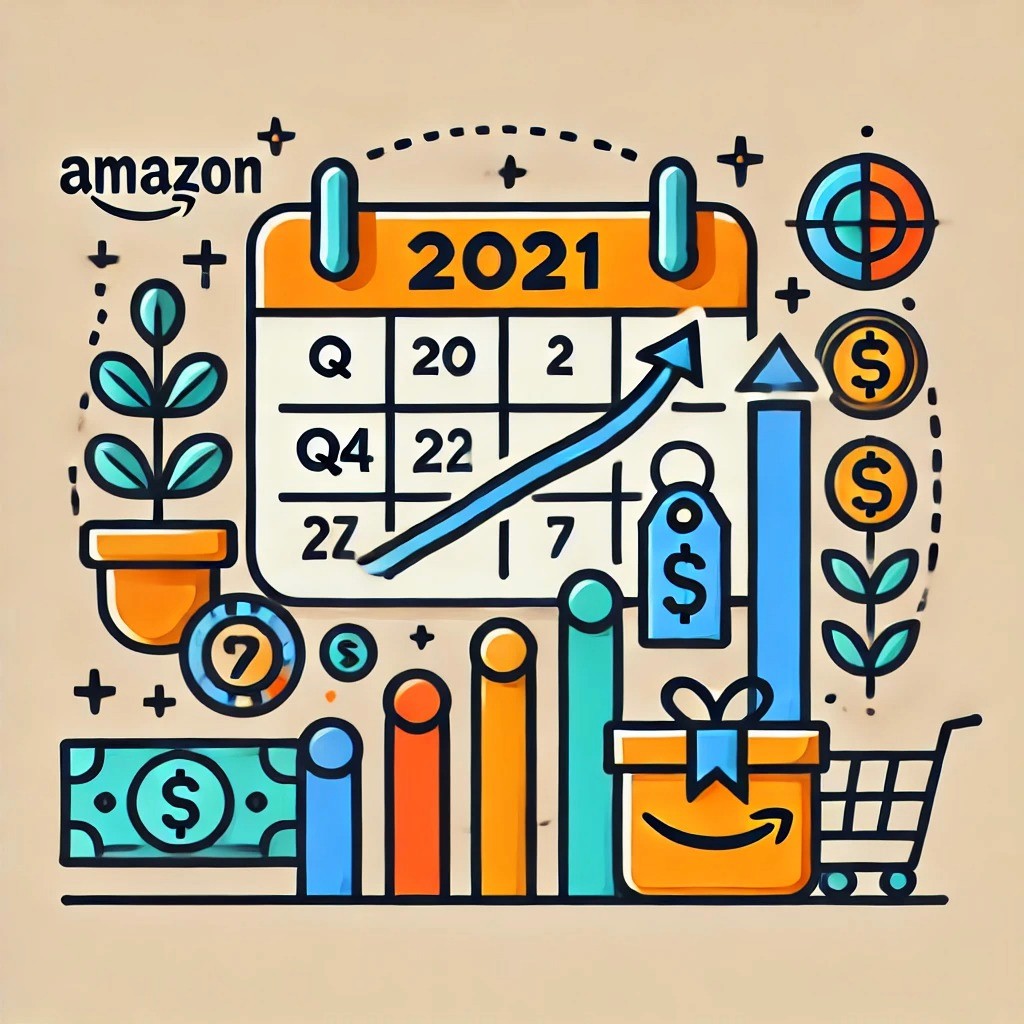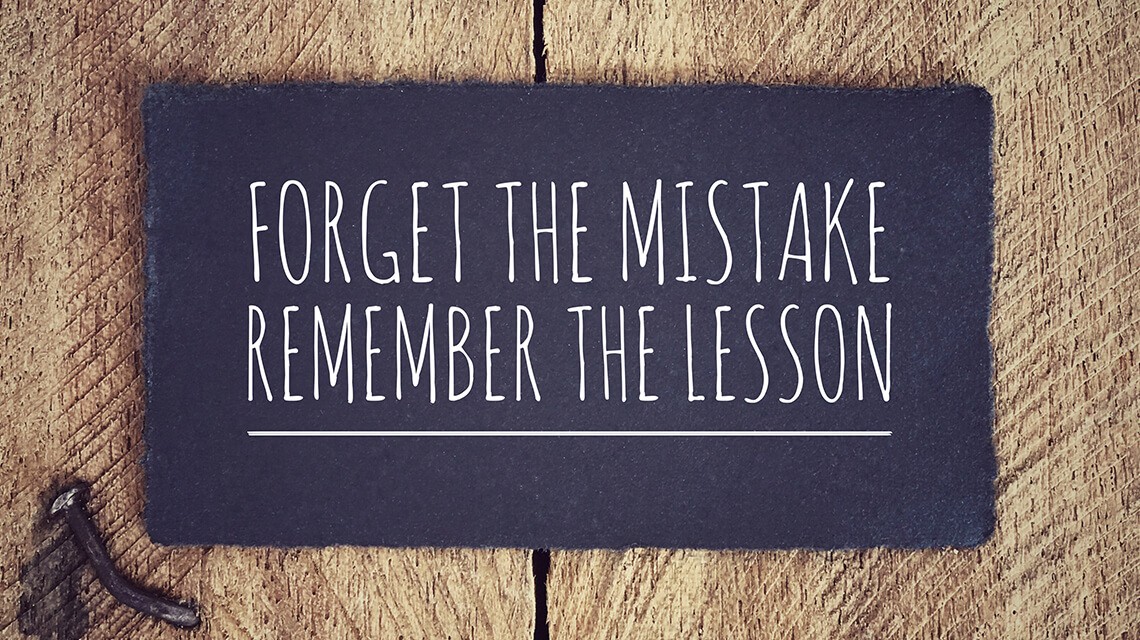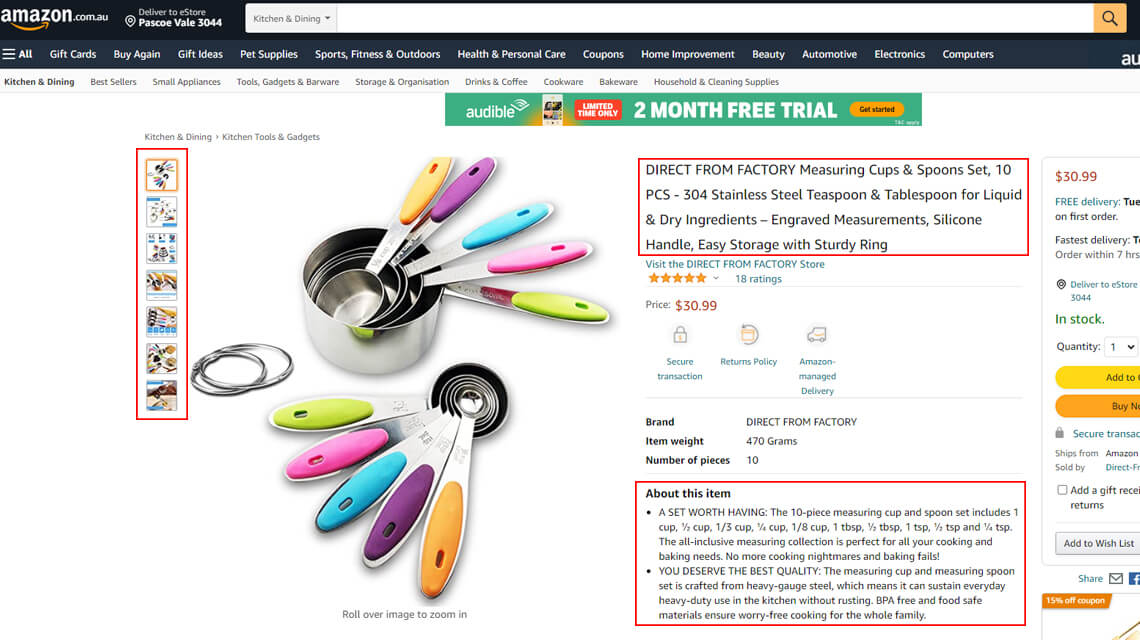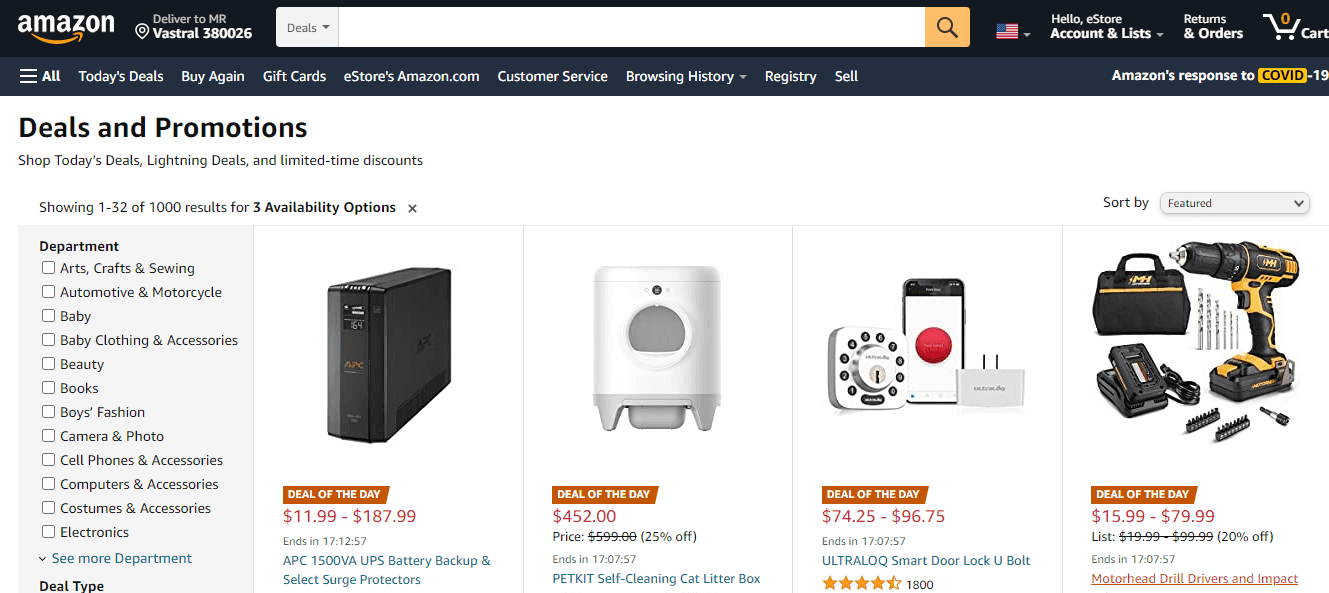Back to Page
Amazon Selling Tips
8 Amazon Selling Tips For A Profitable Q4 2021
8 Amazon Selling Tips For A Profitable Q4 2021


Back to Page
Amazon Selling Tips
8 Amazon Selling Tips For A Profitable Q4 2021

Everything needs to be in place in Q4 – inventory management, advertising campaigns, optimized product listings, and more. For a majority of Amazon sellers, quarter four does the heavy lifting in terms of sales and this brief 3-month window can truly make or break your business. A lack of preparation in Q3 can make the best months of the year worst. To help you out, we’ve put together helpful tips and things to keep in mind as Q4 approaches. But first, let us take a look at the key dates and inventory deadlines for the next 4 months.
Key dates for Q4 2021
October 21 to November 17
Inbound shipping cut-off for vendors: Deal inventory must be in transit.
October 21: the United States
November 5: Australia, Canada, France, Germany, Italy, the Kingdom of Saudi Arabia, Mexico, the Netherlands, Spain, the United Arab Emirates, and the United Kingdom
November 14: Japan
November 17: Singapore
October 24 to November 17
FBA Inventory cut off date for sellers: Make sure your shipments arrive at Amazon well in advance of key shopping dates. Inventory should arrive at our fulfillment centers by this date to ensure your products are available to the customers during the holiday.
October 24: Canada and Mexico
November 3: the United States
November 5: France, Germany, Italy, the Kingdom of Saudi Arabia, the Netherlands, Spain, the United Arab Emirates, and the United Kingdom
November 12: Australia
November 14: Japan
November 17: Singapore
November 26
USA Thanksgiving
Black Friday begins on this day and promotions end on November 28.
November 29
Cyber Monday begins and coupon submission closes on this day.
8 Actionable tips for a profitable Q4 2021
#1: Learn from the past, watch your present,and create a future

No matter how good Q4 2020 was, there is always room for improvement. Since you have some time on hand, make a list of loopholes in your past year’s sales strategy, identify what went wrong last year, schedule a meeting with your Amazon seller consultant, and make sure the mistakes are not repeated. Then, go to your business reports, and you’ll easily get a list of high-performing and underperforming products. Double down your efforts on the low performers and make sure your best-sellers are optimized, heavily promoted, and well in stock.
#2: Your products should be in stock, always, always

This may seem like a no-brainer, but inventory management is the linchpin in the success of Q4. Amazon does not make it any easier for sellers to effectively manage inventory. To deal with the supply chain disruptions, Amazon will continue to put shipment and storage restrictions like restock limits and ASIN level quality limits, so get clear on your inventory management strategy from today and make a plan of action to tackle any obstacles that come your way. Your products should be in stock throughout the entire Q4 because - no inventory = no visibility = no sales.
But at the same time, you want to make sure that you do not overstock. To correctly forecast your inventory, you can use Prime Day performance data or sales data from Q4 2020.
#3: Make your listings ready for the increase in traffic

Your product listings should be ready for the flurry of traffic they’ll see in the next four months. Do not wait until November to optimize the listing and create images. Start today because there is no point in getting traffic on your listing if the information you have on your listing copy is incorrect or your product photos aren’t as enticing as your competitors. Sellers invest a big chunk of time in crafting a fancy action plan for PPC, but if your detail page isn’t prepared for the traffic, you’re also throwing your marketing dollars down the drain. Here’s everything you need to check to ensure that your listing is optimized for conversion:
A keyword-rich yet readable title. Your title should have keywords from your first page competitors, the USP of your product, and crucial product information like capsule count, size, pack of info, etc. Adding key information in your title helps improve click-through rates.
Bullet points that highlight all the features and benefits of your product. Stuff your bullets occasionally with keywords.
A description that highlights your brand story and includes a paragraph on how your product is the solution to the shopper’s problem.
A+ Content that represents your brand. A+ Content or A+ Page is no longer an exciting new feature. It’s a prerequisite to establish your brand on Amazon. An effective A+ page is 70% design & 30% text – use Amazon infographic images, add in some lifestyle and that’s it. You have an A+ Page that’ll be the highlight of your detail page.
9 High-quality images. Your shoppers might not read the description you write, but they will view every image you upload. Your listing images can make or break your listing, so make sure you get them professionally shot and created.
Tip: Amazon listing optimization is not a DIY thing, for best results, get help from experts.
#4: Offerings: Go above & beyond PPC

Deals are featured on high-traffic pages, giving your products a boost in visibility. Offering a Lightning Deal or a 7-Day Deal can help you bring your products in front of more eyeballs. To be eligible for Deals, you should be a “Professional Seller with at least five Seller Feedback Ratings per month and an overall rating of at least 3.5 stars.”
Here’s a list of deals and promotions sellers can offer on their products:
Promotions: Sellers can offer any of the four promotions: Free Shipping, Percentage Off, Buy One Get One or Giveaway.
Digital Coupon: Coupons can be Percentage Off or Money Off and the discount must be between 5% and 80% off your lowest price in the last 30 days. Coupons show up on your search results, detail page, gold box deals page, or a separate landing page just for coupons.
Prime Exclusive Discounts: It’s a new way to reach Prime members. Your product offer would display a discounted price with the regular price crossed out and a savings summary in search results and the product detail page.
Outlet Deals: Here your customers can shop for highly discounted markdowns, overstock deals, and clearance products. You can review Outlet deal recommendations in the Manage Excess Inventory tool and your deals will be featured on the Outlet page.
7-Day Deals: Your products will be featured for up to 7 days on the Amazon Deals page and receive a “Limited time deal” badge in search results.
#5: Advertise beyond Amazon

Amongst a pool of competitors, it is extremely difficult for your product to get noticed and stand out. But bringing in off-Amazon traffic to your listing can help get an edge. This supplementary traffic helps you make a sale before any noise comes in. Plus, with the launch of the Brand Referral Bonus Program, you now have another reason to bring in off-Amazon traffic to your listing. For those who don’t know, the BRB program incentivizes sellers with a bonus averaging 10% for diverting external traffic to their detail page.
Related blog posts: Driving external traffic on Amazon: An investment that will bring dividends for years and Referral Bonus: Monetize your off-Amazon marketing efforts
#6: But Amazon PPC is essential too
It goes without saying but perk up your Amazon PPC efforts in the next four months, especially around the holidays. Monitor and optimize your sponsored ad campaigns regularly and make sure they are never out of budget. Amazon recently rolled out Budget Rules in Sponsored Product Ad campaigns where advertisers can set rules to increase the daily campaign budget on Prime Day, Black Friday, or even on weekends to ensure your campaigns don’t go out of budget. Try creating campaigns for all the ad types Sponsored Product Ads, Sponsored Display Ads, Category Targeting Ads, Sponsored Brand Ads, Video Ads, Store Ads, Audio Ads, etc., and see what works best for your business.
Here are the ad types you can use:
Sponsored Product Ads - Helps improve visibility and traffic on your detail page
Sponsored Display Ads - Helps retarget existing customers
Category Targeting Ads - Helps drive consideration and can be used to cross sell your product
Sponsored Brand Ads - Helps improve brand awareness
Video Ads, Store Ads - Helps your product stand out in the SERPs
Audio Ads - Helps build your brand and engage shoppers on and off Amazon
#7: Cut through the noise by building a brand
Amazon is increasingly focused on creating brands that customers trust. Are you? Every new update or feature released by the retail giant is for brand registered sellers. So, it goes without saying that if you want to take advantage of these swanky new features like Amazon Post, Sponsored Brand Video ads, etc, then you will have to get your brand registered. But your efforts should not stop here. Make efforts to build a brand. Use tools like Amazon Enhanced Brand Content (A+ Content), Brand Store, Amazon Live, Amazon Posts, Video creatives, etc to stay on the top of the mind of customers. Always remember, even amidst the rush of Q4, your shoppers will choose a branded product over a discounted product.
#8: Delegate & outsource as much as you can
Don’t try and do it all by yourself, or you will end up frustrated and tired. Whenever you can, outsource your Amazon-related tasks like listing optimization, PPC management, and inventory forecasting to a reputed agency that deals with these things all day and night. Who knows, you might even end up making more profit than you were. We always tell our clients to enjoy their Q4 and especially the holidays with their families because our Amazon consultants will always be there to manage and firefight everything that comes their way. Hope this blog helps you to better plan and manage your Q4 2021. Happy selling and happy holidays!
Everything needs to be in place in Q4 – inventory management, advertising campaigns, optimized product listings, and more. For a majority of Amazon sellers, quarter four does the heavy lifting in terms of sales and this brief 3-month window can truly make or break your business. A lack of preparation in Q3 can make the best months of the year worst. To help you out, we’ve put together helpful tips and things to keep in mind as Q4 approaches. But first, let us take a look at the key dates and inventory deadlines for the next 4 months.
Key dates for Q4 2021
October 21 to November 17
Inbound shipping cut-off for vendors: Deal inventory must be in transit.
October 21: the United States
November 5: Australia, Canada, France, Germany, Italy, the Kingdom of Saudi Arabia, Mexico, the Netherlands, Spain, the United Arab Emirates, and the United Kingdom
November 14: Japan
November 17: Singapore
October 24 to November 17
FBA Inventory cut off date for sellers: Make sure your shipments arrive at Amazon well in advance of key shopping dates. Inventory should arrive at our fulfillment centers by this date to ensure your products are available to the customers during the holiday.
October 24: Canada and Mexico
November 3: the United States
November 5: France, Germany, Italy, the Kingdom of Saudi Arabia, the Netherlands, Spain, the United Arab Emirates, and the United Kingdom
November 12: Australia
November 14: Japan
November 17: Singapore
November 26
USA Thanksgiving
Black Friday begins on this day and promotions end on November 28.
November 29
Cyber Monday begins and coupon submission closes on this day.
8 Actionable tips for a profitable Q4 2021
#1: Learn from the past, watch your present,and create a future

No matter how good Q4 2020 was, there is always room for improvement. Since you have some time on hand, make a list of loopholes in your past year’s sales strategy, identify what went wrong last year, schedule a meeting with your Amazon seller consultant, and make sure the mistakes are not repeated. Then, go to your business reports, and you’ll easily get a list of high-performing and underperforming products. Double down your efforts on the low performers and make sure your best-sellers are optimized, heavily promoted, and well in stock.
#2: Your products should be in stock, always, always

This may seem like a no-brainer, but inventory management is the linchpin in the success of Q4. Amazon does not make it any easier for sellers to effectively manage inventory. To deal with the supply chain disruptions, Amazon will continue to put shipment and storage restrictions like restock limits and ASIN level quality limits, so get clear on your inventory management strategy from today and make a plan of action to tackle any obstacles that come your way. Your products should be in stock throughout the entire Q4 because - no inventory = no visibility = no sales.
But at the same time, you want to make sure that you do not overstock. To correctly forecast your inventory, you can use Prime Day performance data or sales data from Q4 2020.
#3: Make your listings ready for the increase in traffic

Your product listings should be ready for the flurry of traffic they’ll see in the next four months. Do not wait until November to optimize the listing and create images. Start today because there is no point in getting traffic on your listing if the information you have on your listing copy is incorrect or your product photos aren’t as enticing as your competitors. Sellers invest a big chunk of time in crafting a fancy action plan for PPC, but if your detail page isn’t prepared for the traffic, you’re also throwing your marketing dollars down the drain. Here’s everything you need to check to ensure that your listing is optimized for conversion:
A keyword-rich yet readable title. Your title should have keywords from your first page competitors, the USP of your product, and crucial product information like capsule count, size, pack of info, etc. Adding key information in your title helps improve click-through rates.
Bullet points that highlight all the features and benefits of your product. Stuff your bullets occasionally with keywords.
A description that highlights your brand story and includes a paragraph on how your product is the solution to the shopper’s problem.
A+ Content that represents your brand. A+ Content or A+ Page is no longer an exciting new feature. It’s a prerequisite to establish your brand on Amazon. An effective A+ page is 70% design & 30% text – use Amazon infographic images, add in some lifestyle and that’s it. You have an A+ Page that’ll be the highlight of your detail page.
9 High-quality images. Your shoppers might not read the description you write, but they will view every image you upload. Your listing images can make or break your listing, so make sure you get them professionally shot and created.
Tip: Amazon listing optimization is not a DIY thing, for best results, get help from experts.
#4: Offerings: Go above & beyond PPC

Deals are featured on high-traffic pages, giving your products a boost in visibility. Offering a Lightning Deal or a 7-Day Deal can help you bring your products in front of more eyeballs. To be eligible for Deals, you should be a “Professional Seller with at least five Seller Feedback Ratings per month and an overall rating of at least 3.5 stars.”
Here’s a list of deals and promotions sellers can offer on their products:
Promotions: Sellers can offer any of the four promotions: Free Shipping, Percentage Off, Buy One Get One or Giveaway.
Digital Coupon: Coupons can be Percentage Off or Money Off and the discount must be between 5% and 80% off your lowest price in the last 30 days. Coupons show up on your search results, detail page, gold box deals page, or a separate landing page just for coupons.
Prime Exclusive Discounts: It’s a new way to reach Prime members. Your product offer would display a discounted price with the regular price crossed out and a savings summary in search results and the product detail page.
Outlet Deals: Here your customers can shop for highly discounted markdowns, overstock deals, and clearance products. You can review Outlet deal recommendations in the Manage Excess Inventory tool and your deals will be featured on the Outlet page.
7-Day Deals: Your products will be featured for up to 7 days on the Amazon Deals page and receive a “Limited time deal” badge in search results.
#5: Advertise beyond Amazon

Amongst a pool of competitors, it is extremely difficult for your product to get noticed and stand out. But bringing in off-Amazon traffic to your listing can help get an edge. This supplementary traffic helps you make a sale before any noise comes in. Plus, with the launch of the Brand Referral Bonus Program, you now have another reason to bring in off-Amazon traffic to your listing. For those who don’t know, the BRB program incentivizes sellers with a bonus averaging 10% for diverting external traffic to their detail page.
Related blog posts: Driving external traffic on Amazon: An investment that will bring dividends for years and Referral Bonus: Monetize your off-Amazon marketing efforts
#6: But Amazon PPC is essential too
It goes without saying but perk up your Amazon PPC efforts in the next four months, especially around the holidays. Monitor and optimize your sponsored ad campaigns regularly and make sure they are never out of budget. Amazon recently rolled out Budget Rules in Sponsored Product Ad campaigns where advertisers can set rules to increase the daily campaign budget on Prime Day, Black Friday, or even on weekends to ensure your campaigns don’t go out of budget. Try creating campaigns for all the ad types Sponsored Product Ads, Sponsored Display Ads, Category Targeting Ads, Sponsored Brand Ads, Video Ads, Store Ads, Audio Ads, etc., and see what works best for your business.
Here are the ad types you can use:
Sponsored Product Ads - Helps improve visibility and traffic on your detail page
Sponsored Display Ads - Helps retarget existing customers
Category Targeting Ads - Helps drive consideration and can be used to cross sell your product
Sponsored Brand Ads - Helps improve brand awareness
Video Ads, Store Ads - Helps your product stand out in the SERPs
Audio Ads - Helps build your brand and engage shoppers on and off Amazon
#7: Cut through the noise by building a brand
Amazon is increasingly focused on creating brands that customers trust. Are you? Every new update or feature released by the retail giant is for brand registered sellers. So, it goes without saying that if you want to take advantage of these swanky new features like Amazon Post, Sponsored Brand Video ads, etc, then you will have to get your brand registered. But your efforts should not stop here. Make efforts to build a brand. Use tools like Amazon Enhanced Brand Content (A+ Content), Brand Store, Amazon Live, Amazon Posts, Video creatives, etc to stay on the top of the mind of customers. Always remember, even amidst the rush of Q4, your shoppers will choose a branded product over a discounted product.
#8: Delegate & outsource as much as you can
Don’t try and do it all by yourself, or you will end up frustrated and tired. Whenever you can, outsource your Amazon-related tasks like listing optimization, PPC management, and inventory forecasting to a reputed agency that deals with these things all day and night. Who knows, you might even end up making more profit than you were. We always tell our clients to enjoy their Q4 and especially the holidays with their families because our Amazon consultants will always be there to manage and firefight everything that comes their way. Hope this blog helps you to better plan and manage your Q4 2021. Happy selling and happy holidays!
Everything needs to be in place in Q4 – inventory management, advertising campaigns, optimized product listings, and more. For a majority of Amazon sellers, quarter four does the heavy lifting in terms of sales and this brief 3-month window can truly make or break your business. A lack of preparation in Q3 can make the best months of the year worst. To help you out, we’ve put together helpful tips and things to keep in mind as Q4 approaches. But first, let us take a look at the key dates and inventory deadlines for the next 4 months.
Key dates for Q4 2021
October 21 to November 17
Inbound shipping cut-off for vendors: Deal inventory must be in transit.
October 21: the United States
November 5: Australia, Canada, France, Germany, Italy, the Kingdom of Saudi Arabia, Mexico, the Netherlands, Spain, the United Arab Emirates, and the United Kingdom
November 14: Japan
November 17: Singapore
October 24 to November 17
FBA Inventory cut off date for sellers: Make sure your shipments arrive at Amazon well in advance of key shopping dates. Inventory should arrive at our fulfillment centers by this date to ensure your products are available to the customers during the holiday.
October 24: Canada and Mexico
November 3: the United States
November 5: France, Germany, Italy, the Kingdom of Saudi Arabia, the Netherlands, Spain, the United Arab Emirates, and the United Kingdom
November 12: Australia
November 14: Japan
November 17: Singapore
November 26
USA Thanksgiving
Black Friday begins on this day and promotions end on November 28.
November 29
Cyber Monday begins and coupon submission closes on this day.
8 Actionable tips for a profitable Q4 2021
#1: Learn from the past, watch your present,and create a future

No matter how good Q4 2020 was, there is always room for improvement. Since you have some time on hand, make a list of loopholes in your past year’s sales strategy, identify what went wrong last year, schedule a meeting with your Amazon seller consultant, and make sure the mistakes are not repeated. Then, go to your business reports, and you’ll easily get a list of high-performing and underperforming products. Double down your efforts on the low performers and make sure your best-sellers are optimized, heavily promoted, and well in stock.
#2: Your products should be in stock, always, always

This may seem like a no-brainer, but inventory management is the linchpin in the success of Q4. Amazon does not make it any easier for sellers to effectively manage inventory. To deal with the supply chain disruptions, Amazon will continue to put shipment and storage restrictions like restock limits and ASIN level quality limits, so get clear on your inventory management strategy from today and make a plan of action to tackle any obstacles that come your way. Your products should be in stock throughout the entire Q4 because - no inventory = no visibility = no sales.
But at the same time, you want to make sure that you do not overstock. To correctly forecast your inventory, you can use Prime Day performance data or sales data from Q4 2020.
#3: Make your listings ready for the increase in traffic

Your product listings should be ready for the flurry of traffic they’ll see in the next four months. Do not wait until November to optimize the listing and create images. Start today because there is no point in getting traffic on your listing if the information you have on your listing copy is incorrect or your product photos aren’t as enticing as your competitors. Sellers invest a big chunk of time in crafting a fancy action plan for PPC, but if your detail page isn’t prepared for the traffic, you’re also throwing your marketing dollars down the drain. Here’s everything you need to check to ensure that your listing is optimized for conversion:
A keyword-rich yet readable title. Your title should have keywords from your first page competitors, the USP of your product, and crucial product information like capsule count, size, pack of info, etc. Adding key information in your title helps improve click-through rates.
Bullet points that highlight all the features and benefits of your product. Stuff your bullets occasionally with keywords.
A description that highlights your brand story and includes a paragraph on how your product is the solution to the shopper’s problem.
A+ Content that represents your brand. A+ Content or A+ Page is no longer an exciting new feature. It’s a prerequisite to establish your brand on Amazon. An effective A+ page is 70% design & 30% text – use Amazon infographic images, add in some lifestyle and that’s it. You have an A+ Page that’ll be the highlight of your detail page.
9 High-quality images. Your shoppers might not read the description you write, but they will view every image you upload. Your listing images can make or break your listing, so make sure you get them professionally shot and created.
Tip: Amazon listing optimization is not a DIY thing, for best results, get help from experts.
#4: Offerings: Go above & beyond PPC

Deals are featured on high-traffic pages, giving your products a boost in visibility. Offering a Lightning Deal or a 7-Day Deal can help you bring your products in front of more eyeballs. To be eligible for Deals, you should be a “Professional Seller with at least five Seller Feedback Ratings per month and an overall rating of at least 3.5 stars.”
Here’s a list of deals and promotions sellers can offer on their products:
Promotions: Sellers can offer any of the four promotions: Free Shipping, Percentage Off, Buy One Get One or Giveaway.
Digital Coupon: Coupons can be Percentage Off or Money Off and the discount must be between 5% and 80% off your lowest price in the last 30 days. Coupons show up on your search results, detail page, gold box deals page, or a separate landing page just for coupons.
Prime Exclusive Discounts: It’s a new way to reach Prime members. Your product offer would display a discounted price with the regular price crossed out and a savings summary in search results and the product detail page.
Outlet Deals: Here your customers can shop for highly discounted markdowns, overstock deals, and clearance products. You can review Outlet deal recommendations in the Manage Excess Inventory tool and your deals will be featured on the Outlet page.
7-Day Deals: Your products will be featured for up to 7 days on the Amazon Deals page and receive a “Limited time deal” badge in search results.
#5: Advertise beyond Amazon

Amongst a pool of competitors, it is extremely difficult for your product to get noticed and stand out. But bringing in off-Amazon traffic to your listing can help get an edge. This supplementary traffic helps you make a sale before any noise comes in. Plus, with the launch of the Brand Referral Bonus Program, you now have another reason to bring in off-Amazon traffic to your listing. For those who don’t know, the BRB program incentivizes sellers with a bonus averaging 10% for diverting external traffic to their detail page.
Related blog posts: Driving external traffic on Amazon: An investment that will bring dividends for years and Referral Bonus: Monetize your off-Amazon marketing efforts
#6: But Amazon PPC is essential too
It goes without saying but perk up your Amazon PPC efforts in the next four months, especially around the holidays. Monitor and optimize your sponsored ad campaigns regularly and make sure they are never out of budget. Amazon recently rolled out Budget Rules in Sponsored Product Ad campaigns where advertisers can set rules to increase the daily campaign budget on Prime Day, Black Friday, or even on weekends to ensure your campaigns don’t go out of budget. Try creating campaigns for all the ad types Sponsored Product Ads, Sponsored Display Ads, Category Targeting Ads, Sponsored Brand Ads, Video Ads, Store Ads, Audio Ads, etc., and see what works best for your business.
Here are the ad types you can use:
Sponsored Product Ads - Helps improve visibility and traffic on your detail page
Sponsored Display Ads - Helps retarget existing customers
Category Targeting Ads - Helps drive consideration and can be used to cross sell your product
Sponsored Brand Ads - Helps improve brand awareness
Video Ads, Store Ads - Helps your product stand out in the SERPs
Audio Ads - Helps build your brand and engage shoppers on and off Amazon
#7: Cut through the noise by building a brand
Amazon is increasingly focused on creating brands that customers trust. Are you? Every new update or feature released by the retail giant is for brand registered sellers. So, it goes without saying that if you want to take advantage of these swanky new features like Amazon Post, Sponsored Brand Video ads, etc, then you will have to get your brand registered. But your efforts should not stop here. Make efforts to build a brand. Use tools like Amazon Enhanced Brand Content (A+ Content), Brand Store, Amazon Live, Amazon Posts, Video creatives, etc to stay on the top of the mind of customers. Always remember, even amidst the rush of Q4, your shoppers will choose a branded product over a discounted product.
#8: Delegate & outsource as much as you can
Don’t try and do it all by yourself, or you will end up frustrated and tired. Whenever you can, outsource your Amazon-related tasks like listing optimization, PPC management, and inventory forecasting to a reputed agency that deals with these things all day and night. Who knows, you might even end up making more profit than you were. We always tell our clients to enjoy their Q4 and especially the holidays with their families because our Amazon consultants will always be there to manage and firefight everything that comes their way. Hope this blog helps you to better plan and manage your Q4 2021. Happy selling and happy holidays!









